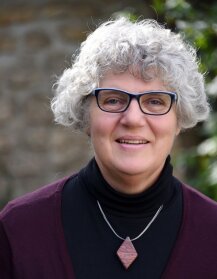
- Event
- Knowledge Transfer and Innovation
Published: | By: Stephan Laudien
The new special exhibition in the Mineralogical Collection of Friedrich Schiller University Jena is dedicated to an outstanding mineral collector, the Gera cloth manufacturer Moritz Rudolf Ferber (1805–1875). The exhibition "What a treasure—the mineralogical collection of Dr h. c. Moritz Rudolf Ferber" will be on display from 11 June to 16 November at Sellierstraße 6.
"Ferber was not just a collector, but an outstanding crystallographer himself and well connected with contemporary experts," says Dr Birgit Kreher-Hartmann, curator of the Mineralogical Collection. Ferber was a passionate mineral collector from an early age and amassed a collection of over 10,000 specimens. His collection was purchased in 1951 and became part of the University of Jena's collection. Ferber himself was closely associated with Jena, says Birgit Kreher-Hartmann: "Ferber was the last president of the Jena Mineralogical Society, the first Geosciences society in the world." The activities of the "Societät für die gesammte Mineralogie zu Jena" have been dormant since 1885, as no successor to Ferber could be found.
Ferber was a cloth manufacturer, collector and industrial pioneer in Gera
Moritz Rudolf Ferber was a successful cloth manufacturer in his home town of Gera. He was also an industrial pioneer who operated the first steam engine in Gera. As Birgit Kreher-Hartmann says, field trips took the young Ferber to Naples and Mount Vesuvius several times during his commercial training in Italy, where he collected rocks and laid the foundations for his collection. He later acquired beautiful pieces tendered by dealers and also received minerals from his son Hermann, who worked as a mining engineer in Spain, Chile and Bolivia, among other places.
Ferber was in close contact with Ernst Erhard Schmid, the first full professor of "Natural History, with special reference to mineralogy and geognosy" at the University of Jena. In 1871, Moritz Rudolf Ferber was elected the seventh and last president of the "Societät", an office previously held by Privy Councillor Goethe, among others. A year later, Ferber was awarded an honorary doctorate from the University of Jena in recognition of his crystallographic work. As Birgit Kreher-Hartmann says, Ferber produced precise and elaborately designed catalogues of his collection in the last years of his life, of "extraordinary quality".
The collection also contains numerous meteorites. The minerals are categorized according to a special method that is no longer used today. A selection of the most beautiful pieces will be shown in the special exhibition. Birgit Kreher-Hartmann will speak about Ferber's mineralogical work at the opening. After Prof. Dr Juraj Majzlan, the holder of the chair of General and Applied Mineralogy, has welcomed the guests, the President of Friedrich Schiller University, Prof. Dr Andreas Marx, will contribute a word of welcome.
-
11 June 2025 · 18:00—20:00 c.t.11 June 2025 18:00—20:00 c.t.Exhibition opening - guests are welcome.
Contact:
